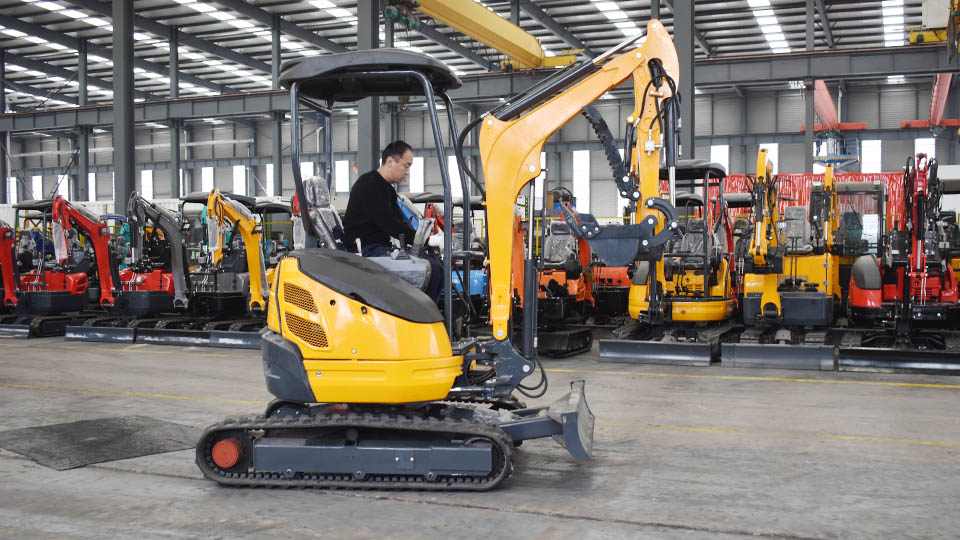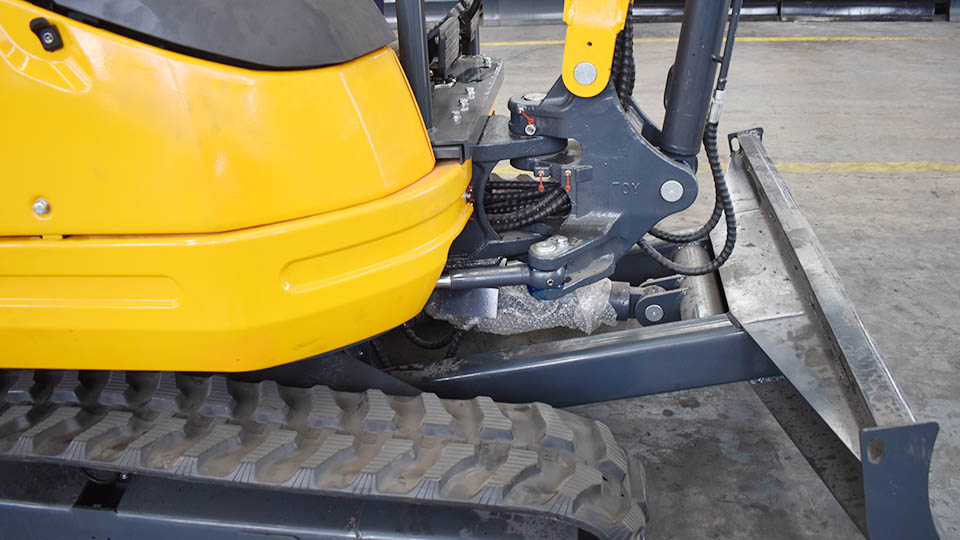Mini excavators those compact yet remarkably versatile earthmoving machines have become indispensable tools across a wide spectrum of industries from construction and landscaping to utilities and even agriculture. Their ability to operate in confined spaces their ease of transport and their surprising power make them a preferred choice for a multitude of tasks. However a crucial factor in selecting the right mini excavator for a specific project is its weight. The weight of a mini excavator directly influences its performance capabilities its suitability for different ground conditions its ease of transport and ultimately its overall effectiveness on the job site. This comprehensive guide delves into the various weight classes of mini excavators explores the key considerations related to their weight and provides insights to help you choose the ideal machine for your specific project needs.
Understanding the Weight Spectrum of Mini Excavators
The term excavator for sale generally encompasses machines weighing less than ten metric tons or approximately twenty-two thousand pounds. Within this broad category there exists a significant range of sizes and corresponding weights each offering a unique balance of power maneuverability and transport ability. Categorizing mini excavators by weight can provide a helpful framework for understanding their capabilities:
Ultra-Compact or Micro Excavators (Under One Metric Ton): These are the smallest and lightest mini excavators often weighing between seven hundred kilograms and one thousand kilograms or fifteen hundred to twenty-two hundred pounds. Their primary advantage lies in their exceptional maneuverability in extremely tight spaces such as indoors backyards with narrow gates or congested urban environments. Their low weight also translates to minimal ground pressure making them ideal for working on delicate surfaces like lawns or finished landscaping. However their digging force reach and lifting capacity are typically limited making them suitable for lighter tasks like small trenching projects minor landscaping or indoor demolition.
Compact Mini Excavators (One to Three Metric Tons): This is a popular and versatile weight class encompassing machines weighing between one thousand and three thousand kilograms or twenty-two hundred to sixty-six hundred pounds. These excavators strike a good balance between power maneuverability and transport ability. They offer increased digging force and reach compared to ultra-compact models making them suitable for a wider range of tasks including general landscaping utility work trenching for pipes or electrical lines and small-scale construction projects. Their weight allows for relatively easy transport on standard trailers pulled by pickup trucks or SUVs while still providing sufficient stability for moderately demanding tasks.
Mid-Range Mini Excavators (Three to Six Metric Tons): Weighing between three thousand and six thousand kilograms or sixty-six hundred to thirteen thousand two hundred pounds these excavators offer a significant step up in power digging depth reach and lifting capacity. Their increased weight provides enhanced stability for more demanding excavation tasks such as foundation work pipe laying and heavier landscaping applications. While still relatively maneuverable their larger size and weight may limit access in extremely confined spaces and require more robust transportation arrangements.

Larger Mini Excavators (Six to Ten Metric Tons): These are the heaviest machines within the mini excavator classification approaching the size and capabilities of smaller compact excavators. Weighing between six thousand and ten thousand kilograms or thirteen thousand two hundred to twenty-two thousand pounds they offer substantial digging power reach and lifting capacity making them suitable for more significant excavation and construction tasks. Their weight provides excellent stability for heavy lifting and deep digging while still retaining some of the maneuverability advantages of smaller mini excavators compared to full-sized excavators. However their transportation requires larger trailers and more powerful towing vehicles and their ground pressure is higher.
Key Considerations Related to Mini Excavator Weight:
When choosing a mini excavator for your project its weight is a critical factor that influences several key aspects of its performance and suitability:
Ground Pressure: As discussed earlier the weight of the mini excavator directly determines the ground pressure it exerts. Lower ground pressure is essential when working on sensitive surfaces to prevent damage. Ultra-compact and lighter compact models excel in this regard. Heavier mini excavators will exert higher ground pressure which may be acceptable on construction sites with robust ground conditions but could be detrimental in landscaping or residential areas. Always consider the ground conditions of your project site when evaluating excavator weight.
Stability: A heavier mini excavator generally offers greater stability particularly when digging at maximum reach swinging heavy loads or operating on uneven terrain. While all mini excavators are designed with safety in mind a heavier machine provides a more stable platform for demanding tasks. If your project involves significant lifting or working on slopes a heavier model within the appropriate size class might be preferable.
Digging Force and Capacity: While not solely determined by weight heavier mini excavators often have more powerful hydraulic systems and a more robust overall construction translating to greater digging force and the ability to handle larger buckets and attachments. For projects involving tougher soil conditions or the need to move larger volumes of material a heavier machine within your accessibility constraints will likely be more efficient.
Reach and Digging Depth: The weight of the excavator can indirectly influence its reach and digging depth as heavier machines often have longer booms and arms to leverage their increased power and stability. Consider the required reach and digging depth for your project when evaluating different weight classes.
Transportation: The weight of the mini excavator is a primary factor in determining how it can be transported to and from the job site. Ultra-compact and lighter compact models can often be transported on standard trailers pulled by readily available vehicles. Heavier mini excavators require specialized trailers and more powerful towing vehicles increasing transportation costs and logistical complexity. Factor in the frequency and distance of transport when making your decision.
Maneuverability and Accessibility: Lighter and more compact mini excavators excel in tight workspaces and areas with limited access. Their smaller size and lower weight make them easier to maneuver around obstacles and through narrow passages. If your project involves working in confined spaces an ultra-compact or lighter compact model will likely be the best choice.
Operating Costs: Generally heavier mini excavators tend to have higher operating costs including fuel consumption and maintenance due to their larger engines and more complex hydraulic systems. Consider the overall budget for your project including operating expenses when selecting the weight class.
Choosing the Right Machine for Your Project:
Selecting the ideal mini excavator weight for your project involves a careful assessment of your specific needs and priorities. Consider the following questions:
What are the primary tasks involved in your project? (e.g., light landscaping heavy excavation utility trenching demolition)
What are the ground conditions at the job site? (e.g., soft soil hard clay paved surfaces sensitive landscaping)
Are there any space constraints or access limitations? (e.g., narrow gates indoor work congested urban areas)
What are the lifting requirements of the project? (e.g., weight and frequency of lifting)
What is the required digging depth and reach?
How frequently and over what distances will the excavator need to be transported?
What is your budget for rental or purchase and ongoing operating costs?
By carefully considering these questions and understanding the weight-related characteristics of different mini excavator classes you can narrow down your options and choose the machine that offers the optimal balance of power maneuverability stability and transportability for your specific project requirements.
For example if your project involves landscaping in residential backyards with narrow access points and delicate lawns an ultra-compact or light compact mini excavator with low ground pressure and excellent maneuverability would be the ideal choice even if its digging force and lifting capacity are somewhat limited. Conversely for a construction project involving trenching for foundations and moving heavier materials on a robust job site a mid-range or even a larger mini excavator might be more suitable despite its higher ground pressure and transportation requirements.

In situations where both confined space access and significant digging power are needed you might need to explore models that offer a good compromise or consider using multiple machines if the project scope and budget allow.
Conclusion:
The weight of a mini excavator is a critical factor that significantly influences its performance capabilities its suitability for various job site conditions and its overall effectiveness. By understanding the different weight classes of mini excavators and carefully considering the specific requirements of your project including ground conditions space constraints lifting needs transportation logistics and budget you can make an informed decision and choose the right machine to maximize productivity efficiency and safety. This guide provides a framework for navigating the mini excavator weight spectrum empowering you to select the ideal earth moving partner for your next endeavor.
Post time:Sep-25-2020
